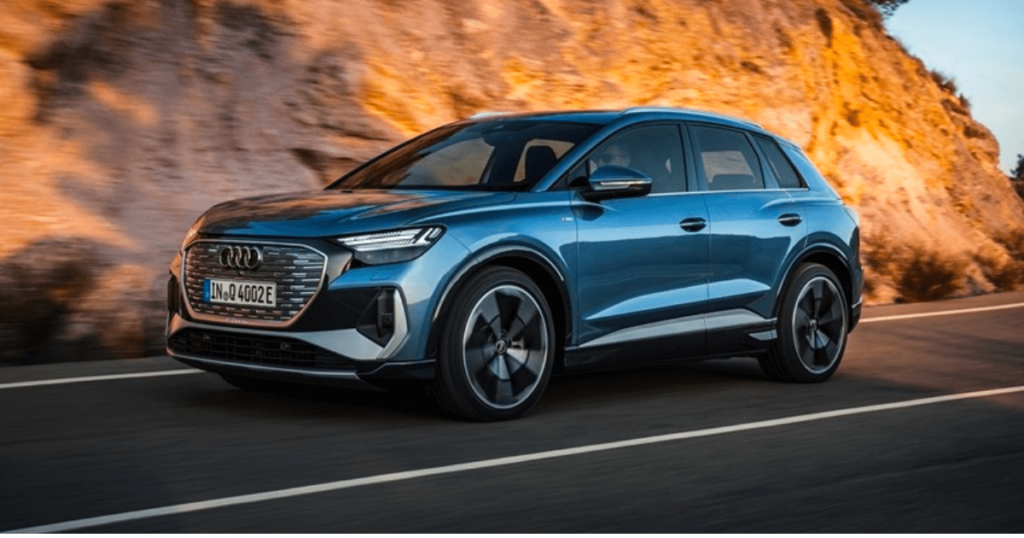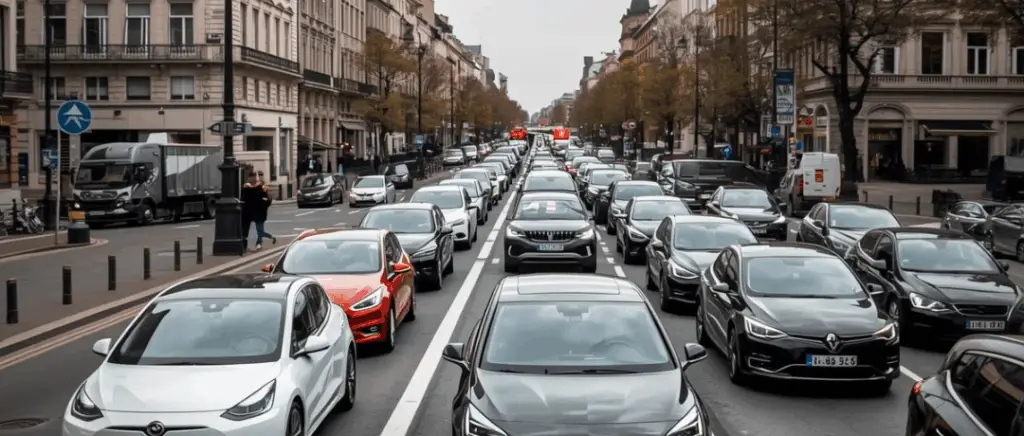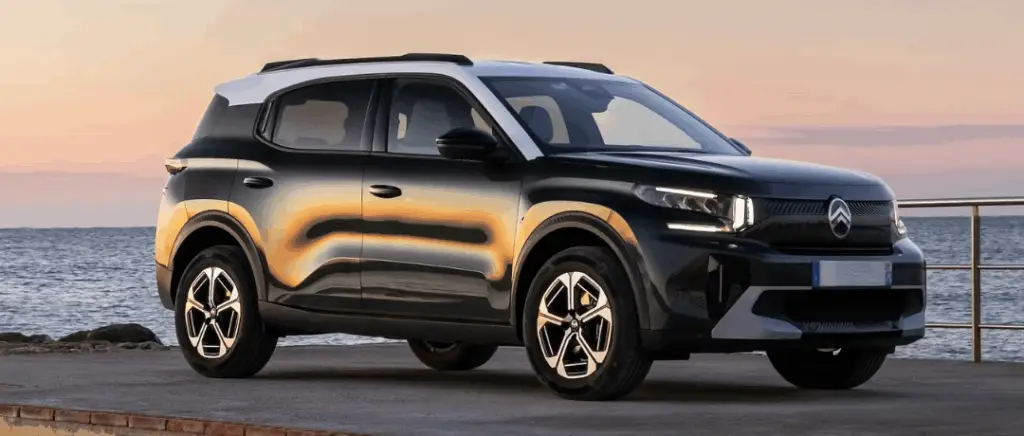Peugeot e-408
A 100 % electric version of the Peugeot 408 is planned for 2024, based on the EMP2-V4 platform of the Peugeot e-308.
La battery 400V and chemistry will be identical between the 308 and 408 electric models, with a slightly higher capacity for the 408 due to a larger wheelbase, aiming for almost 400 km of electric travel.autonomy on the WLTP cycle.
The motor will be a permanent magnet synchronous motor, manufactured in collaboration with Japan's Nidec, similar to that used on the e-308, but the power may be limited to keep the weight down.
The e-408, scheduled for the end of 2024, will come in combustion, plug-in hybrid and 100 % electric versions, to compete with the Renault Arkana.
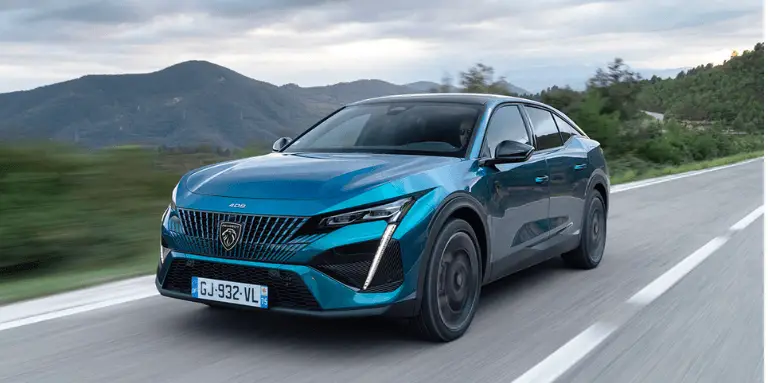
Citroën Oli
The Citroën Oli, unveiled at the Rétromobile show, is more than just a concept car to arouse interest.
Beyond its design, it was created to give a glimpse of Citroën's future plans.
Although exuberant, as was the case with the Citroën Ami, it testifies to the brand's ability to dare to be original. This concept car, seen on the streets of Paris, is well designed, testing out new materials and spacious interiors.
Its aim is to offer an affordable vehicle, envisaged at around €20,000.
Despite its much-criticised square design, the emphasis is on lightness to save energy, with a promising range of 400 km thanks to a 40 kWh battery.
The Oli captured attention, just as the Citroën Ami had done, signifying an image success for Citroën.
However, its future in Citroën's range remains uncertain, requiring a three-year wait to see if the concept will evolve into something more mass-adoptable.
Oli's design could influence Citroën's future models, in line with the brand's vision for affordable, sustainable electric vehicles.
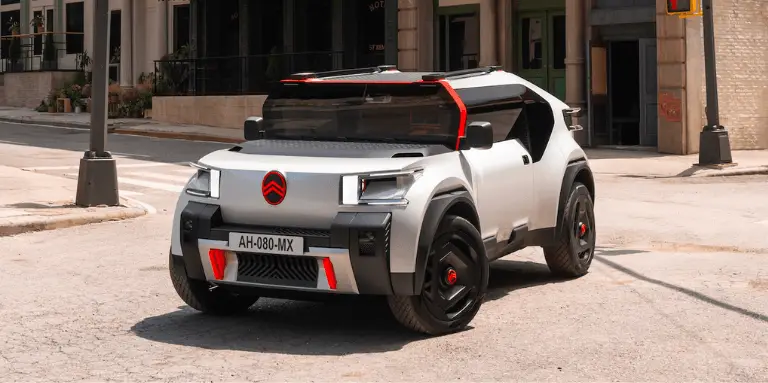
Renault Scenic e-Tech
Renault is expanding its electric range with the new Scénic e-Techaimed at large families.
With a range of 610 km thanks to the CMF-EV platform and an 87 kWh battery pack, the vehicle can be powered by either 170 or 220 bhp engines.
Two battery options, 60 or 87 kWh, give ranges of 420 km and 610 km respectively.
The Scénic can recover up to 230 km of range in 30 minutes on a fast charge.
It is due to go on sale in 2024, although prices are still undetermined.
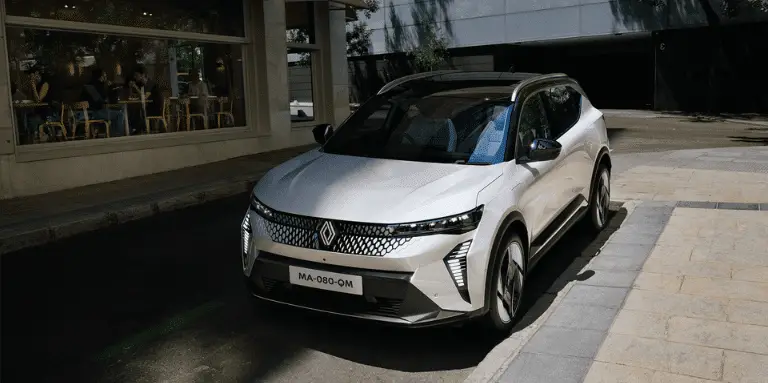
Renault R5 e-Tech
The Renault 5 prototype unveiled in early 2021 evokes the electric future of the R5, borrowing its looks from the urban icon of yesteryear with a subtle blend of tradition and modernity. The exterior features square headlamps, vertical rear lights and a revisited Vasarely logo, while incorporating contemporary touches such as a more prominent front diamond, a strip of light linking the rear lights and slightly more muscular lines. A small '5' on the front fog lamps serves as a nostalgic reminder.
Although the interior remains a mystery, a glimpse through the windscreen reveals a substantial head-up display, probably an optional feature. It's not hard to imagine a central touchscreen and digital meters in the future R5. No details on dimensions have been shared, but with the R5 set to replace the Zoe and Twingo models, a length of around 4 metres is presumed.
In terms of powertrains, the R5 Prototype displays its electric character, abandoning superfluous elements such as the radiator grille. It will distance itself from the architecture of the ZoéThe new Zoé is based on the CMF-B/EV platform, although its range may be less than the Zoé's 395 km, thanks to a new battery chemistry. However, a range of at least 300 km is envisaged to rival rivals such as the Peugeot e-208 and the Fiat 500 electric.
The equipment envisaged for the electric R5 includes a large head-up display, especially on the top-of-the-range versions. Will there be a luxury variant called Baccara? That's an attractive guess.
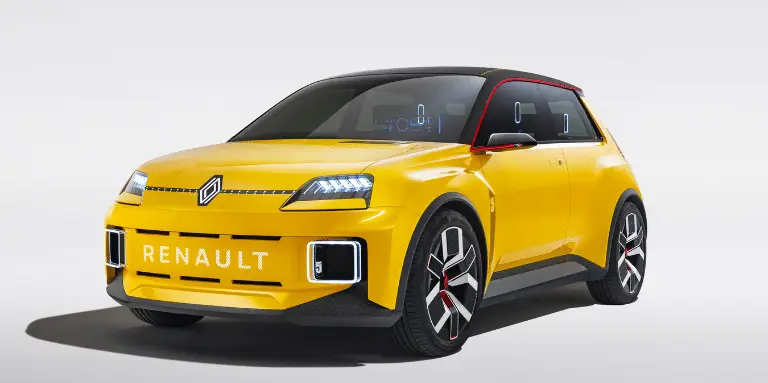
Hyundai Ioniq 7
Hyundai is continuing to diversify its electric range, and following on from the Ioniq 5 and the distinctive Ioniq 6 saloon, the large 7-seater SUV, Ioniq 7, is making its debut.
This SUV will join the Kia EV9 from the Hyundai Motors Group, representing a new variant in the Hyundai range.
The Ioniq 7, originally unveiled as the Seven concept in November 2021, will retain the essence of the design while adopting practical changes such as traditional doors and a more economical body structure.
The distinctive lighting of the prototype will be retained, characterising the 'Ioniq' line.
At present, only a camouflaged prototype has been spotted, masking the contours of the vehicle.
Like the Kia EV9, the Ioniq 7 will be based on the E-GMP electric platform, also shared with the Kia EV6, and will feature a spacious three-row cabin combining SUV and MPV elements.
It will offer flexible powertrain options, with rear-wheel drive or all-wheel drive configurations, and ultra-fast 800V charging will be standard.
The official unveiling of the Ioniq 7 is scheduled for early 2024, reflecting Hyundai's ongoing commitment to electrification.
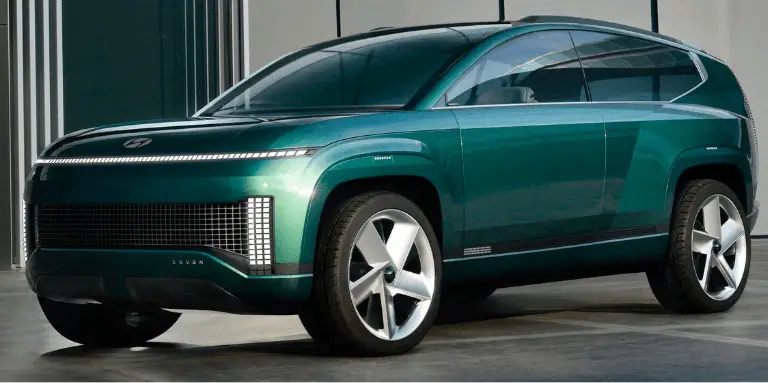
Citroën e-C3
Citroën recently unveiled the ë-C3, a small car electric city caraiming for Dacia Spring. The starting price of the ë-C3 is €23,300, and it benefits from a environmental bonus 5,000, making it competitive with the Dacia Spring. It is equipped with a 44 kWh battery giving a range of 320 km, as well as fast-charging capabilities. By comparison, the Dacia Spring has a 26.8 kWh battery offering a WLTP range of 230 km.
The ë-C3 is also distinguished by its more powerful engine, delivering 83 kW (113 bhp), while the Spring offers 33 kW (45 bhp) in the base version and 48 kW (65 bhp) in the Extreme version. Citroën has chosen to emphasise comfort with its Citroën Advanced Comfort Suspension and increased dimensions. In addition, the ë-C3 offers a range of driving aids, advanced equipment and smartphone integration.
Stellantis, the parent company, is proposing a simplified range with just two versions available, called "You" and "Max". There are also plans for a shorter-range ë-C3 model priced at €19,990 by 2025. Stellantis is also offering a lease option for the ë-C3 You at €99 per month, with various incentives and discounts available.
The ë-C3 is due to be launched in early 2024, and could face competition from other brands such as Fiat, Volkswagen, Renault and, of course, Dacia.
Audi A6 e-Tron
Audi revealed details of the A6 Avant e-tron at the Shanghai Motor Show, indicating that it will be assembled in China from the end of 2024 and sold in Europe in 2025.
This announcement is part of the expansion of German carmakers' electric ranges, with Audi following up its Sportback model in mid-2024.
The A6 e-tron will not replace the current internal combustion version, which will be renewed under a different name in 2025, with the two models co-existing until 2030. For the time being, the German manufacturer has only revealed a few technical specifications:
- Two engines delivering a combined power output of 476 bhp and 800 Nm of torque.
- Acceleration from 0 to 100 km/h in less than 4 seconds, with a top speed of 250 km/h.
- Built on the new PPE electric platform, which aims to reduce recharging times.
- It also benefits from an unprecedented 800 V technical platform.
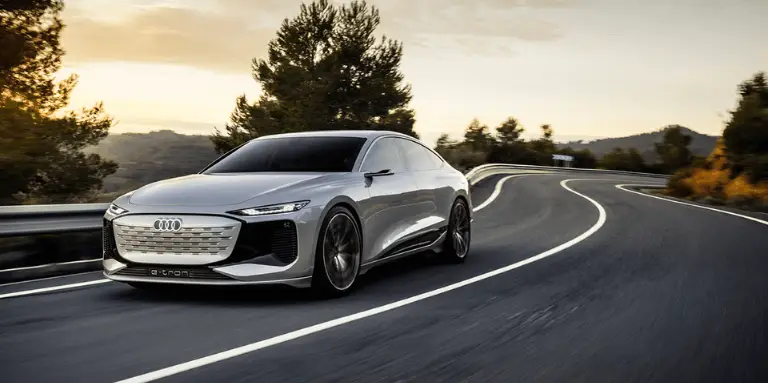
Monday to Friday 9am - 12.30pm - 2pm - 7pm
Skoda Elroq
Scheduled for 2024, Skoda introduces the Elroq, an electric compact SUV, a crucial pivot in its journey towards electrification. This crossover is designed to mark the transition from Skoda's current aesthetic to that of the future.
The Elroq, the hinge of Skoda's metamorphosis,
Like the Enyaq, the Elroq will be based on the Volkswagen Group's MEB modular platform. It will be the forerunner of the three electric vehicles that Skoda will launch between 2024 and 2026, and one of the first to feature the brand's new logo and revised typography. Its appearance will be somewhere between that of the Karoq and that of the Vision 7S concept, the forerunner of the large seven-seater SUV planned for 2026. The Elroq will be distinguished by a black panel in place of the radiator grille, housing various sensors. The daytime running lights will be more tapered than on the Karoq, resembling those on the Kamiq, with the main headlights positioned below, all in a softened front-end design that favours aerodynamics and range.
The rise of compact electric SUVs
The interface of the Skoda Elroq will have a new look compared to the Karoq, and will be more in line with the Enyaq. On board, there will be a compact digital dashboard, a high central touchscreen and a significant reduction in the number of physical buttons.
With a stature of around 4.40 m, the Elroq will be positioned between the Peugeot e-2008 and the Kia Niro EV on the market. In Skoda's electric sphere, it will serve as a link between the future urban model succeeding the Fabia in 2025 and the Enyaq, which will undergo a makeover in the same year. The Skoda Elroq is scheduled to arrive in October 2024, marking a significant milestone in Skoda's electrification strategy.
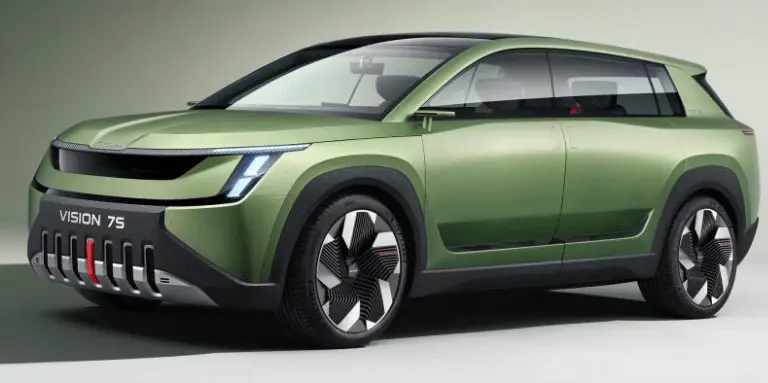
BMW i5
The BMW 5 Series is upgraded to a 100% electric model, and the BMW i5 is available in two variants: i5 eDrive40 and i5 M60 xDrive, with different power ratings and ranges.
The 340-hp eDrive40 has a range of between 477 and 582 km, while the 601-hp M60 xDrive has a range of between 455 and 516 km.
The rapid recharge system allows you to reach 80% in 30 minutes.
The interior features a 14.9-inch touchscreen and vegan upholstery.
Available in spring 2024, prices start at €76,200 for the eDrive40 and rise to €107,500 for the M60 xDrive.
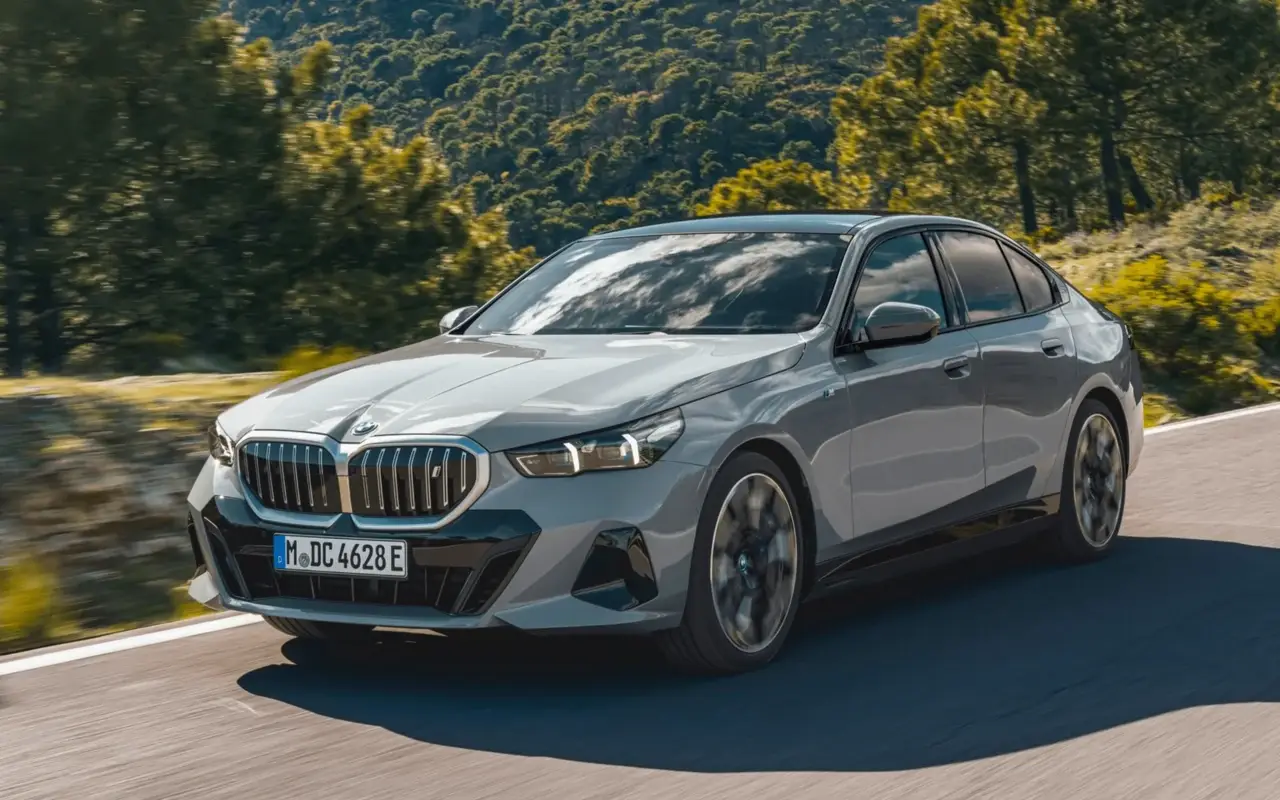
Mini Aceman
Mini is in the final stages of fine-tuning its next little Electric SUVThe new Mini Cooper, which is currently only available as a 3-door model.
Scheduled for launch between late 2024 and early 2025, the Aceman model will compete with vehicles such as the Fiat 600ethe Jeep Avenger and the DS 3 E-Tense.
With its 5 doors, the Aceman rounds off Mini's range, since the electric version of the Mini Cooper is only available as a 3-door variant.
Measuring less than 4.10 metres in length, the Aceman is positioned in the B segment of small SUVs, competing directly with models such as the Jeep Avenger and the Fiat 600e, while adding an electric 100% option to the segment.
In terms of powertrains, the Aceman will probably share its platform and powertrains with the new Mini Cooper, offering 184 bhp and 218 bhp versions, powered by 40.7 kWh and 54.2 kWh batteries respectively.
A sports version, designed by the JCW (John Cooper Works) division, is also in the pipeline.
The model will be produced exclusively in China by Spotlight Automotive Limited, a joint venture between BMW and Chinese carmaker Great Wall, highlighting Mini's commitment to electromobility while expanding its footprint in the growing Chinese market.
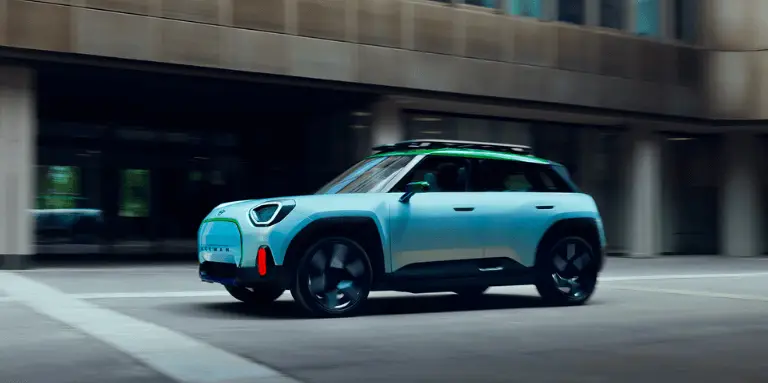
Porsche Macan
The electric Porsche Macan is the fruit of collaboration between Porsche and Audi, and is based on the PPE modular platform, positioning it as a technical cousin to the Q6 e-tron. It promises rear-wheel drive or all-wheel drive, with power of up to 600 bhp and 1,000 Nm of torque in the top-of-the-range version. Depending on the version, two locations for the rear engine are envisaged to offer varied driving dynamics. With a 100 kWh battery and a voltage of 800 V, this vehicle will accept a load of more than 270 kW. Although its launch was initially scheduled for late 2023, the official presentation has been postponed until spring 2024. This electric Macan will coexist with the current model, both of which are produced in Leipzig, Germany, illustrating Porsche's gradual move towards electromobility.
The style of the Macan 2 is typically Porsche, with smooth curves and surfaces enhanced by designer 'modelling'. A change is noticeable on the flanks, with a black plastic strip repositioned higher up. At the rear, the SUV coupé profile is reminiscent of the Mercedes GLC Coupé, with a thin strip of light linking the headlamps, temporarily concealed. In contrast to previous shots, a prominent black stripe has been replaced by a more traditional bumper with two blocked exhaust pipes, while retaining the retractable spoiler of the current petrol model.
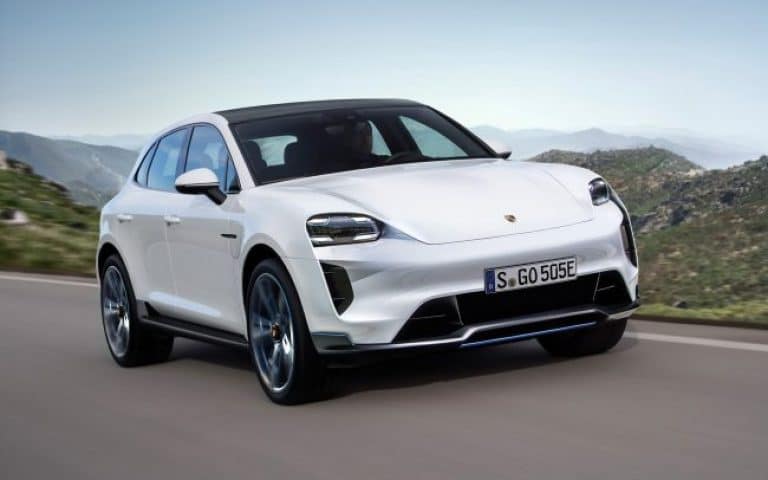
Škoda vision E
Skoda wants to launch his own Electric SUV 100%. Called Vision E for the time being, the concept car will be one of five new electric cars from Skoda to be on the road by 2025.
It is based on the same principles as the Volkswagen ID Cross and theAudi e-tron Sportback. It is therefore likely to have a range of 500 km.
In short, the years ahead are shaping up to be very interesting for electric vehicles. The only downside is that these innovations still have very little to do with electric vehicles. electric vansBut there are always surprises.
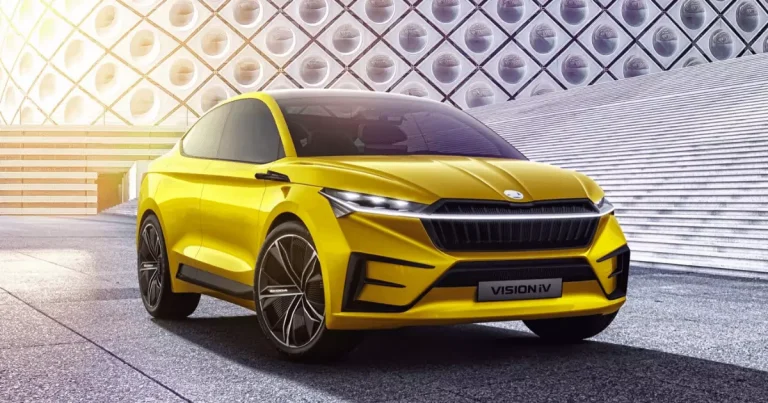
| Modèles | Puissance | Capacité batterie | Autonomie | Vitesse maximale | 0 à 100 km/h |
|---|---|---|---|---|---|
|
Peugeot e-408
|
115 kW (156 hp)
|
NC
|
400 km
|
NC
|
NC
|
|
Citroën Oli
|
100 kW (136 bhp)
|
40 kWh
|
400 km
|
110 km/h
|
NC
|
|
Renault Scenic e-Tech
|
125 kW (170 hp)
|
60 kWh
|
420 km
|
150 km/h
|
9.3 sec
|
|
Renault R5 e-Tech
|
NC
|
NC
|
NC
|
NC
|
NC
|
|
Hyundai Ioniq 7
|
150 kW (204 bhp)
|
77.4 kWh
|
507 km
|
NC
|
NC
|
|
Citroën e-C3
|
82 kW (109 bhp)
|
42 kWh
|
320 km
|
107 km/h
|
NC
|
|
Audi A6 e-Tron
|
350 kW (476 bhp)
|
100 kWh
|
700 km
|
250 km/h
|
4 sec
|
|
Skoda Elroq
|
100 kW (150 bhp)
|
48 kWh
|
300 km
|
NC
|
NC
|
|
BMW i5
|
250 kW (340 bhp)
|
83.9 kWh
|
477 km
|
193 km/h
|
6 sec
|
